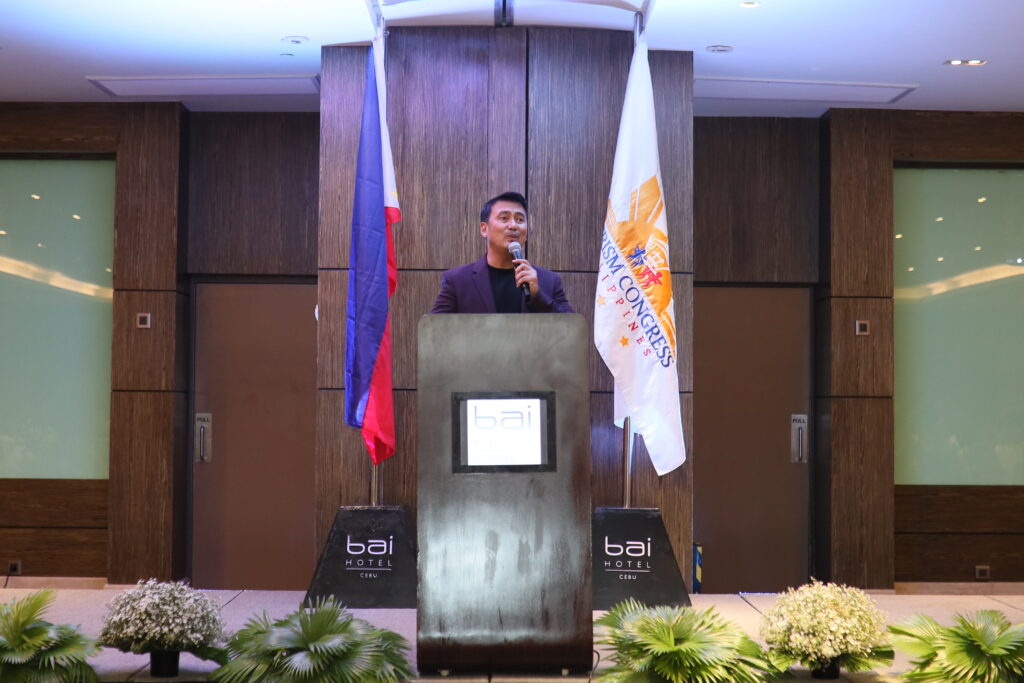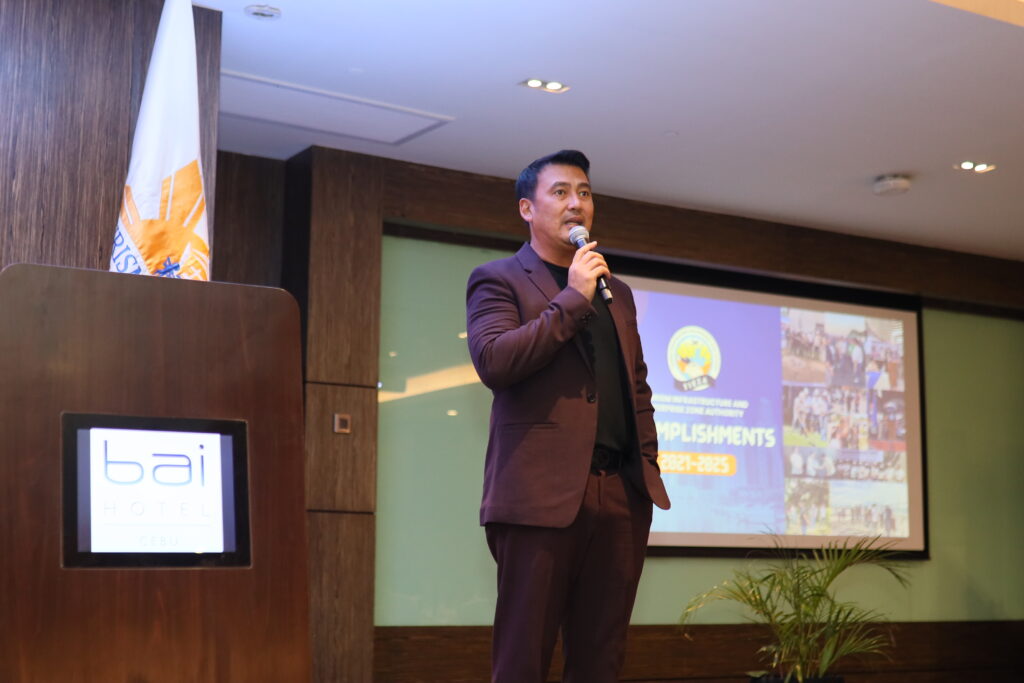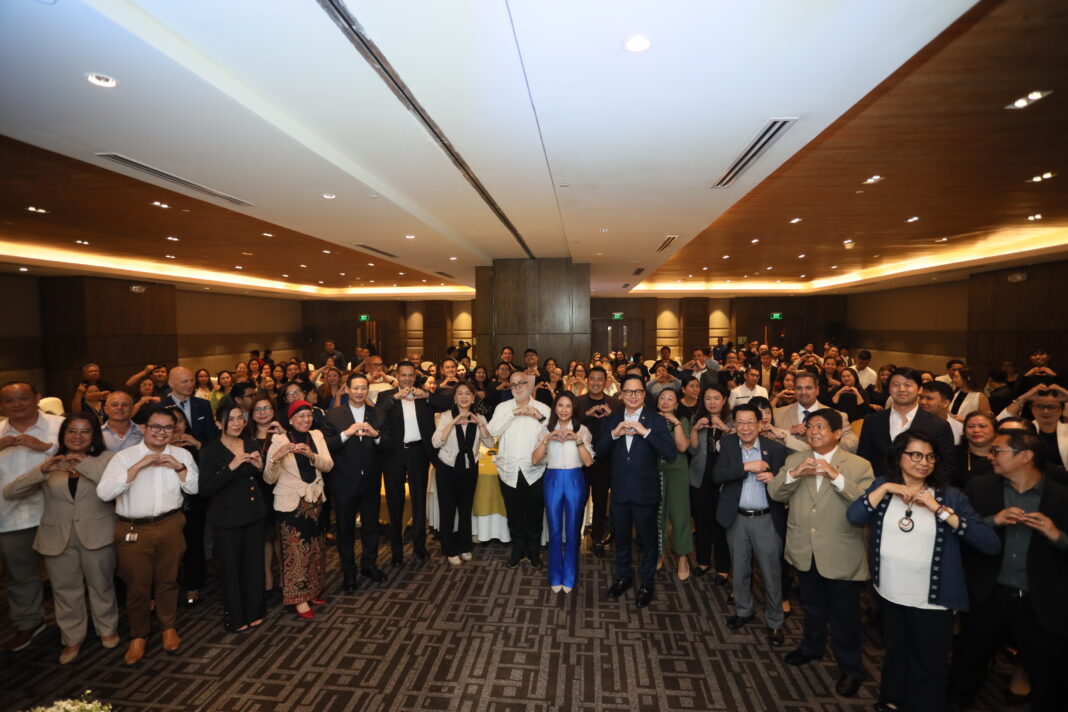- TIEZA COO Mark Lapid addressed stakeholders at the Visayas Tourism Congress, highlighting the agency’s infrastructure accomplishments, post-pandemic recovery, and ongoing efforts to promote transparency in the use of the ₱1,620 travel tax.
- From a 98% financial deficit in 2021 to ₱7.8 billion in travel tax collections in 2024, COO Mark Lapid shares how TIEZA rebounded from the pandemic and is now accelerating infrastructure development across the country.
- Where does your ₱1,620 travel tax go? TIEZA COO Mark Lapid answers this question and calls for greater public awareness and support in maximizing its impact for Philippine tourism infrastructure.
- Speaking at the Visayas Tourism Congress, COO Mark Lapid reaffirmed TIEZA’s commitment to inclusive growth, citing active projects across Cebu and the broader Visayas region, from rest areas to dive tourism support.
- COO Mark Lapid invites investors to partner with TIEZA in building the future of Philippine tourism, highlighting the tourism investment opportunities in TIEZA.
Cebu City, Philippines — Tourism Infrastructure and Enterprise Zone Authority (TIEZA) Chief Operating Officer Mark T. Lapid underscored the agency’s pivotal role in rebuilding and sustaining Philippine tourism infrastructure during his presentation at the Visayas Regional Consultative Meeting of the Tourism Congress of the Philippines (TCP), held on June 26, 2025 at BAI Hotel in Cebu.

Addressing an audience of tourism stakeholders, Lapid shared how TIEZA has emerged resilient despite the crippling effects of the COVID-19 pandemic. When he resumed office in 2021, TIEZA faced a staggering financial deficit of 98%, as its ₱12 billion reserve had been redirected to support the government’s pandemic response. With no outbound travel and closed tourism facilities, the agency’s income sources were severely limited. Yet through swift reforms, strategic partnerships, and digitalization efforts such as the launch of an online travel tax payment system, TIEZA recovered. By the end of 2024, the agency had collected over ₱7.8 billion in travel tax, regaining and even surpassing its pre-pandemic revenue levels.
As of 2025, TIEZA has funded and implemented over 230 tourism infrastructure projects nationwide. This includes the completion and ongoing development of 41 Tourist Rest Areas (TRAs), with more underway and a target of over 100 TRAs to be completed in the next phases. Lapid emphasized that these facilities—often dismissed as mere restrooms—serve as vital support hubs, housing clean sanitation amenities, tourist information centers, and retail spaces for local products. These developments, he said, are strategically located from Batanes to Tawi-Tawi, with the Department of Tourism and its regional directors identifying priority sites for implementation.

TIEZA has also continued its support for dive tourism, with the ongoing installation of ten hyperbaric chambers across key diving destinations, including Cebu, Bohol, Palawan, and Mindoro. These facilities are not only essential for diver safety but can also be used for wellness treatments, expanding their utility for both locals and visitors. The agency plans to add five more units within the year.
Environmental protection efforts have also intensified under TIEZA’s leadership. The agency has played a critical role in restoring water quality in Boracay and Puerto Galera through expanded sewage and water treatment systems. In Boracay alone, sewer connections increased from 970 to over 2,350, helping prevent further ecological degradation. TIEZA has also commissioned the University of the Philippines Visayas to study and recommend solutions for the seasonal algal bloom affecting Boracay’s shores.
TIEZA continues to empower Local Government Units (LGUs) through initiatives like the Tourism Champions Challenge (TCC), which provides funding support to LGUs developing their areas as tourism destinations. Fifteen LGUs have already been awarded, with more expected in the next batch of recipients. Lapid also cited major infrastructure highlights such as the lighting of the San Juanico Bridge, which now serves as a tourism attraction with boat tours and an Instagrammable viewing deck, and the rehabilitation of heritage properties including Mount Data Hotel, Banaue Hotel, and Club Intramuros.
As the Investment Promotion Agency of the tourism industry, TIEZA recognizes the vital role of the private sector thru tourism investments. As of date, TIEZA has approved a total of PHP 229B of investments for the development of Tourism Enterprise Zones and other tourism enterprises. These investments are expected to generate 133,859 jobs within local communities. Geared towards improving the tourist experience and developing new tourism products – ranging from accommodation facilities, farm tourism, sports and recreational facilities, health and wellness, sports tourism – TIEZA continues to encourage the growth of the tourism industry under the Strategic Investments Priority Plan (SIPP). Notable investments include the Fairfield by Marriot at Cebu by the AppleOne Mactan Inc., the Avignon Clinic Grand at Alabang, the expansion project of Belo Medical Group, the Hotel Elizabeth Resorts and Villas at San Vicente, Palawan by the FHG Development Corporation, Bukid Amara- a farm tourism facility in Davao, theme parks such as Enchanted Kingdom and JCastles in Laguna and Batangas, among others.
TIEZA also provides technical assistance in tourism development planning and feasibility studies. As of date, TIEZA has completed the tourism masterplans for Cavite, Leyte, Siargao, Corregidor Island, Mt. Samat, Rizal Park, San Vicente Palawan, Camotes, and Bantayan Islands in Cebu.
Lapid noted TIEZA’s involvement in key international and national events such as the Federation Internationale de Basketball (FIBA) World Cup 2023, United Nations World Tourism Organization (UNWTO) 2024, Asia-Pacific Ministerial Conference on Disaster Risk Reduction (APMCDRR) 2024, Fédération Internationale on Volleyball (FIVB) 2025, and various high-level tourism and trade gatherings. The agency has likewise strengthened its presence in both international and local investment forums to promote opportunities in the Philippine tourism sector.
Lapid took the opportunity to clarify the use of the ₱1,620 travel tax collected from outbound passengers, which remains a key revenue source for TIEZA. Fifty percent of the tax goes directly to TIEZA, while 40% is allocated to the Commission on Higher Education (CHED) and 10% to the National Commission for Culture and the Arts (NCCA). He called for better transparency and awareness on the matter, and expressed support for amendments to the Tourism Act of 2009 to ensure that CHED’s share truly benefits tourism scholars as originally intended.
As part of its forward strategy, TIEZA will ramp up its public awareness campaign. Lapid acknowledged that many Filipinos remain unaware of TIEZA’s functions and contributions, with only 1% of outbound travelers currently using its online services. He appealed to stakeholders and the media to help amplify the agency’s message: that the ₱1,620 travel tax goes directly into real, tangible infrastructure that benefits arts, culture, education, travelers, communities, and the tourism industry as a whole.
“We are not just a government agency — we are your partner in growth,” Lapid emphasized. “Together, as one Tourism Family, we are building a future where Philippine tourism thrives sustainably and inclusively.”
For more information, visit http://www.tieza.gov.ph and follow TIEZA’s social media accounts:
Facebook: https://www.facebook.com/TIEZAOfficial/
Instagram: https://www.instagram.com/tiezagovph/




